Most Beautiful Cars: Ferrari 250
Posted on Sep 4, 2020 in Antique | Comments Off on Most Beautiful Cars: Ferrari 250
“Aerodynamics are for people who can’t build engines” “I don’t sell cars; I sell engines. The cars I throw in for free since something has to hold the engines in.” – Enzo Ferrari
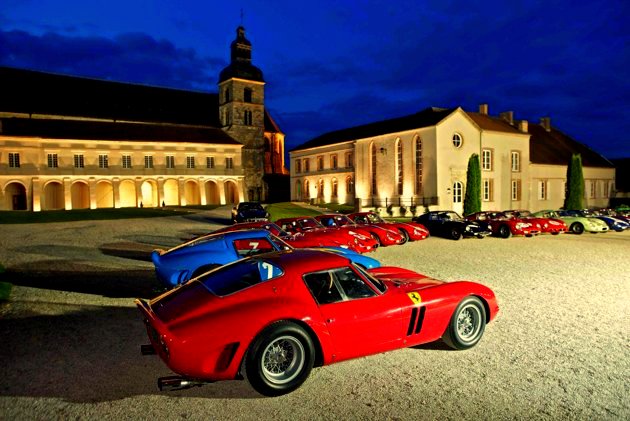
When I decided to create this list, I started with some simple rules. First was to disqualify all pre-war cars, as most were custom built boutique examples created by specialty coachbuilders. I wanted prêt-à-porter, or off the rack designs. Second was to group together certain body styles, showcasing only the best design of the group. Cars like the Gordon Keeble, which looks like a Lancia Flaminia GT would be judged as a set, with the best one winning. Finally, the car design had to be more than beautiful; it also needed to be something of a revolution in the automotive world. The Panhard 24CT is pretty, but not special and therefore would not make the cut.

Today’s selection is very special. It is a model that encompassed no less than 22 different body styles during its lifetime, some of which are universally acclaimed as the most beautiful designs ever. Each of these bodies was built for one purpose; to be a jewelry box for an exquisite 12 cylinder engine called the Colombo Tipo 125 V12. Nearly every variant of the 250 carried this engine, whose lightness and amazing power brought Ferrari a staggering amount of racing victories. All of this amazing beauty was delivered in less of a span than cars like the Citroen DS.

Designed by Gioacchino Colombo, a former Alfa Romeo designer, the span of the 125 engine would start with the first Ferrari road car in 1947 and continue until 1966. It was Ferrari’s first “home grown” engine, and was originally inspired by the American Packard V12 engine. During its lifetime, variants of the Colombo engine were used in the 250 series, as well as Ferrari icons like the 365 California, 365 Daytona, 375MM Ingrid Bergman, 400 Superamerica, the 512 Berlinetta Boxer and the 512 Testarossa.

250 S – The 250 series actually began with the series 225, with race cars preceding the road cars by three years. Most 250 road cars share two wheelbases, either the 94.5 inch short, or the 102.4 long wheel base. The first in the series was the 250S, an experimental Berlinetta prototype, which won Ferrari the 1952 Mille Miglia, was used in the 24 Hours of Le Mans and the Carrera Panamericana.

250 MM – With the 1952 win, the next in the series was aptly named the MM, or Mille Miglia. With coupe bodywork created by Pinin Farina, and the open Barchetta version created by Carrozzeria Vignale, the designs featured recessed headlamps and side vents that became a staple of Ferrari for the 1950’s.

250 Monza – The series continued with the 250 Monza built in 1954. This car was a hybrid between the 750 Monza and the 250 chassis, with coachwork by Pininfarina for the Barchetta, and Carrozzeria Scaglietti for the coupes, including a one-off 500 Mondial.

250 Testa Rossa – The next car would be the unforgettable 250 Testa Rossa, or the “red head.” The Testa Rossa was one of the most successful racing cars in Ferrari history, winning Le Mans three times, Sebring 4 times and Buenos Aires twice. Named for the red valve covers, the original had bodywork by Scaglietti. It was called the “Pontoon” TR, due to the front fender shape which allowed air ducting across the front brakes and out through the open area behind the wheels. In all, 34 Testa Rossas were built from 1956 to 1961. One example of this car recently sold at auction for 16.4 million dollars.
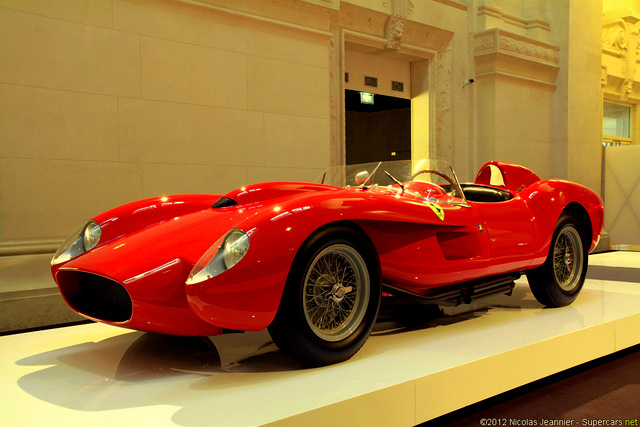
250 TR – This was a more aerodynamic version of the Test Rossa, designed by Pininfarina. Only two factory cars and 19 customer cars were built. With a more powerful engine, this model inspired the F430 road car.
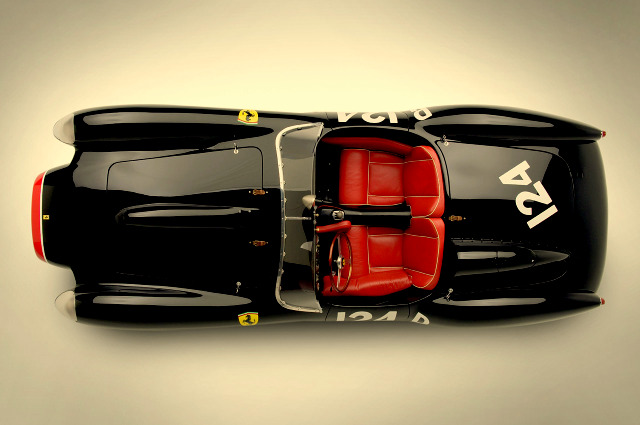
250 GTO – In 1962 Ferrari created the “Gran Turismo Omologata” which means Grand Touring Homologated…sexy eh? This is the car that summed up the philosophy of Ferrari best, the ultimate of performance and styling. It was the first Ferrari to use wind tunnel technology, with a voluptuous body capable of speeds in excess of 180mph. With an original $18,000 US price, buyers had to be personally approved by Enzo Ferrari himself. 39 cars were created, all of which are still accounted for today. Recently, a pastel green GTO built for Sir Stirling Moss sold for a record $35 US million, making it one of the most expensive cars in the world. Not bad for a car that never included a heater, speedometer or odometer.

250 P – In 1963 Ferrari unleashed the 250 P, essentially a 250 LM minus a roof. With styling designed in the wind tunnel, it followed the same lines as the Ford GT, its main competitor. This mid-engine supercar eventually evolved into the 330 P and the 412 P, and was meant to be a track car for the super wealthy.
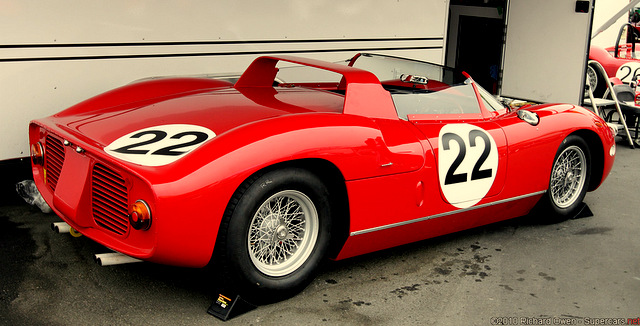
250 LM – This Le Mans racer was designed by Pininfarina, to be used in FIA racing. Enzo had promised to build 100 copies, so it would qualify as a production car, but only 35 were made. Only one was never raced, a luxury model that even had electric windows. Beaten by the Ford GT, the LM marked the end of Ferrari participation in the GT class of 1965 World Sports Car Championship.

250 Export/Europa – These models were the only member of the series to use the Lampredi engine that replaces the Colombo. Ferrari never created a standard body design for the car, and models were styled by Vignale, Pininfarina, and Scaglietti. The Export/Europa was not the prettiest Ferrari in the stable, but was a solid grand tourer.

250 Boano/Ellena – With tail fins and styling by Pininfarina, this was the first real production car with standardized body design. Mario Boano started the production of the car, but demand grew quickly. When he moved to Fiat, it was handed over to his son Ezio Ellena who revised the design as a separate model. A total of 65 Boano cars were built, followed by 40 Ellenas.

250 GT Berlinetta “Tour de France” – Created after Ferrari GT cars took the top three places in the 1957 Tour De France automobile race (not the bicycle race), this car sported a modified Tipo engine. It was so successful that Ferrari continued to win the event an unprecedented nine years in a row. Bodied by Scaglietti, Pininfarina and Zagato, no two cars were the same.
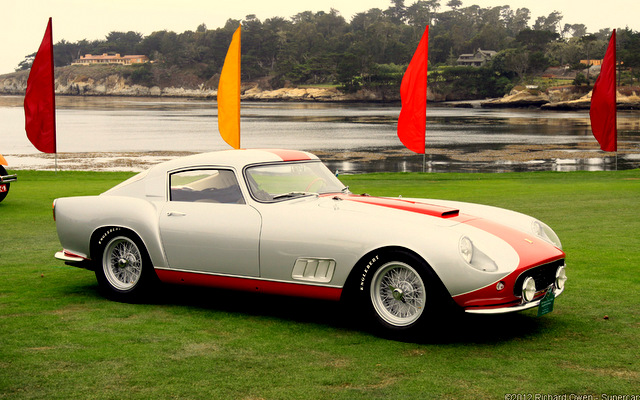
250 GT Cabriolet Pininfarina Series I – Ferrari’s first production cabriolet was designed in a special workshop at Pininfarina. Though the standard body was never really standard, the all shared similar details, and all sported the Colombo Tipo V12. This model is generally considered the 9th Greatest Ferrari of all Time.
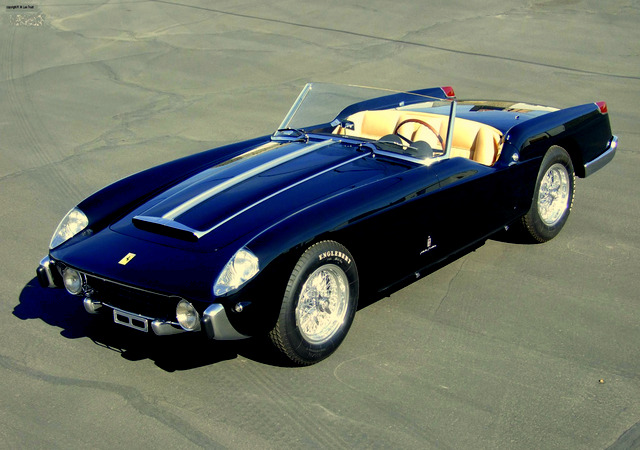
250 GT California Spyder LWB – Motivated by an American to create an open top model that pays homage to Ferrari’s best market, the Scaglietti designed California Spyder is generally considered one of the Greatest Ferraris of all Time.
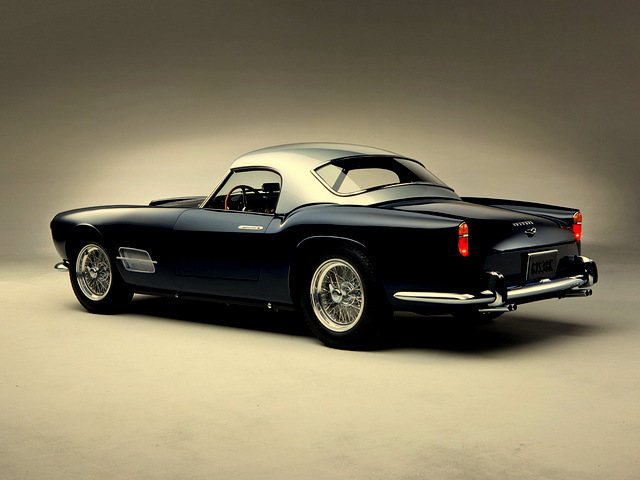
250 GT Coupe Pininfarina – This was a car designed to stabilize Ferrari finances. With 335 examples created, it was a simple GT coupe with clean lines, a notchback roofline and a panoramic rear window. Though it had a standard body design, each model was still bespoke for each customer by Batista “Pinin” Farina himself.
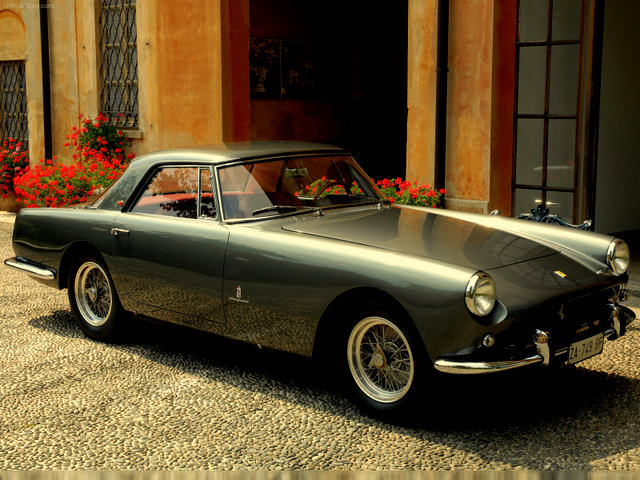
250 GT Cabriolet Pininfarina Series II – The most expensive car in the GT range, it was a high volume car with 212 examples produced.
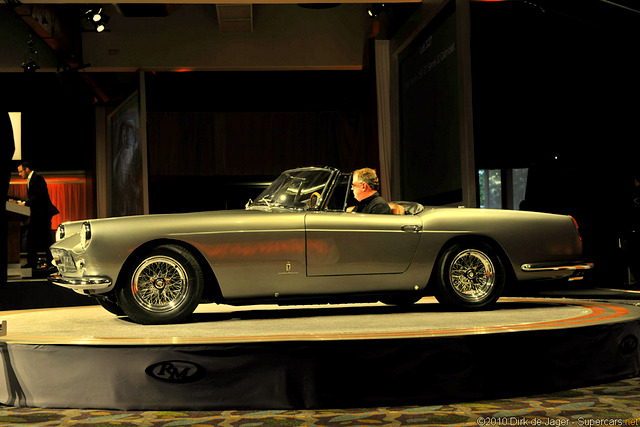
250 GT Berlinetta SWB – Sergio Pininfarina called this car “The first of our three quantum leaps in design with Ferrari.” Originally designed for the 24 hours of Le Mans, it was the natural continuation of the Tour de France model. The wheelbase was shortened for better handling and less weight, and the car became an integral part of the Ferrari legend. This is also the model that Count Giovanni Volpi and Giotto Bizzarrini used to create the Kammback styled “Breadvan.” This car is generally accepted as the 5th Greatest Ferrari of all Time.

250 GT Spider California SWB – One of the most famous of all Ferraris, it is known to no car people as the “Ferris Bueller” car, and to gearheads as the “James Coburn California Spider.” Rated as one of the Greatest Ferraris of all time, the Coburn car recently sold for a record $11 million US dollars.

250 GT/E – In 1963 you could walk into a Ferrari showroom and choose between a GT California, a Pininfarina Cabriolet, a SWB Berlinetta or a GT/E all for the same price. For about $1,000 dollars more you could even get a 250 GTO. With this in mind, more people chose the GT/E than all the others, due to its 4-seat configuration, and its engineering simplicity. This was the car Enzo himself drove, and it marked the transfer of power from Batista Pininfarina to his son Sergio.

250 GT Lusso – Beauty and elegance personified. This is the ultimate Pininfarina design with expert Scaglietti coachwork. Unparalleled in the automotive world, this voluptuous design was the choice of Eric Clapton, Steve McQueen, James Garner and James Coburn. It also was my favorite Lesney “Matchbox” model of all time. Introduced in 1962 as the GTL, it personified the fastback shape of 1960’s grand touring cars, and was the last of the 250 line for Ferrari. Of all the beautiful Ferraris, this will always be my favorite.
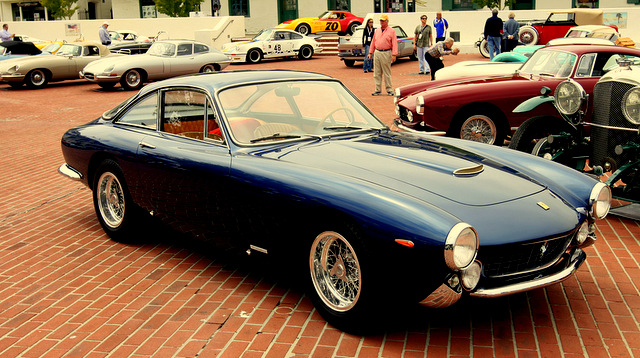







.gif)

